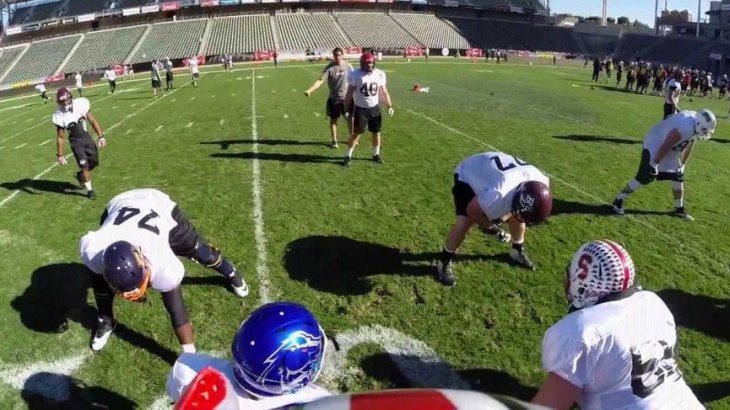
Like most other major sports, the NFL is currently enjoying a wearable technology explosion that’s changing the game. As the players walk out to contest the 49th Superbowl on Sunday, their training, preparation, tactics and plans will have been influenced by technology like never before.
From on-field tracking to improved safety and tactical HUDs, wearables are ushering a new era of football. Not only does this help coaches to get the best out of the players by monitoring their stats on the field and in practice, it also offers fans unprecedented insights into the game.
The stat-heavy nature of American football is why NFL works so well as a fantasy league compared to other sports and one of the reasons why it’s important for fans to have access to this kind of in-game performance data.
On the eve of one of the world’s greatest sporting events, here are the wearables dominating football.
Catapult trackers

Founded in Australia, Catapult Sports is one of the biggest suppliers of athletics tracking tech in the sports world. The company’s gadgetry is used by a quarter of all NFL franchises, along with 10 college football teams and is used primarily for preventing injuries.
GPS trackers around the size of a small mobile phone are worn by the player, usually on the back using a chest harness, although some teams have sewn special pockets into the back of training tops.
By monitoring key data, coaches can monitor players’ work rates and inform game rotations and practice schedules. The technology can also be used to safely rehabilitate injured players.
The NFL doesn’t currently allow use of GPS devices during games, but they’re fast becoming a must-have for training.
GoPro

As NFL players wear helmets, the sport is well suited to player cams, which can be integrated into their head gear to help coaches with tactics and provide ‘player cam’ POV for the fans.
Several teams in the league, such as the Cincinnati Bengals, have already started using GoPro cameras in training, while New York Giants rookie Wide Receiver Odell Beckham Jnr – and the man responsible for the most amazing one-handed catch we’ve ever seen – has also been spotted wearing a GoPro on a chest harness in a Pro Bowl practice session.
GoPro has just done its first major sports league deal, signing up as official partner to the NHL. Could the NFL be next on the list?
Reebok CheckLight

Produced in conjunction with tech company MC10, Reebok’s concussion-busting skullcap was designed to tackle one of sport’s most dangerous problems. American Football has worryingly high concussion rates – not surprising, given the physical nature of the game.
CheckLight aims to keep players safe by using multiple sensors to capture head impact data during play. A green light indicates a low impact, yellow indicates a moderate hit, while a red light means a heavy impact – giving an indication of when a player needs a medical check before returning to the field.
You can read the rest of the article at Wareable (originally published 30 January 2015).










